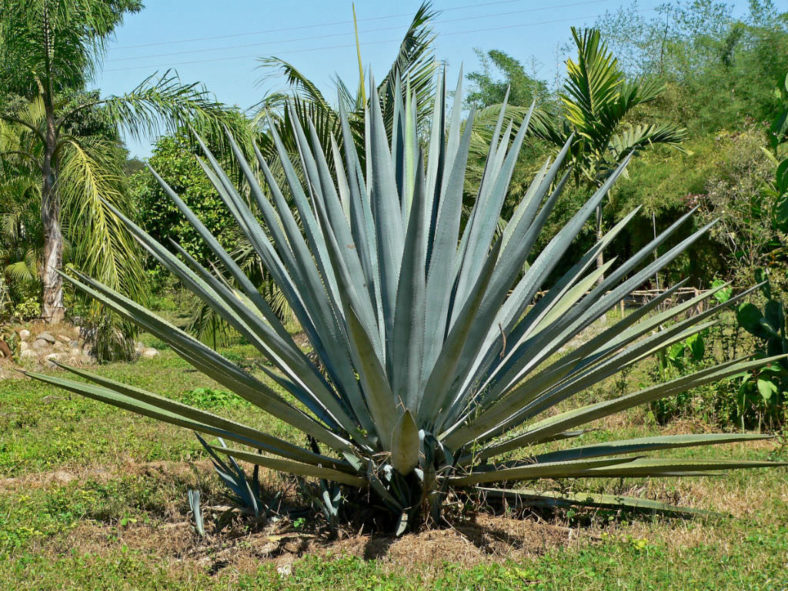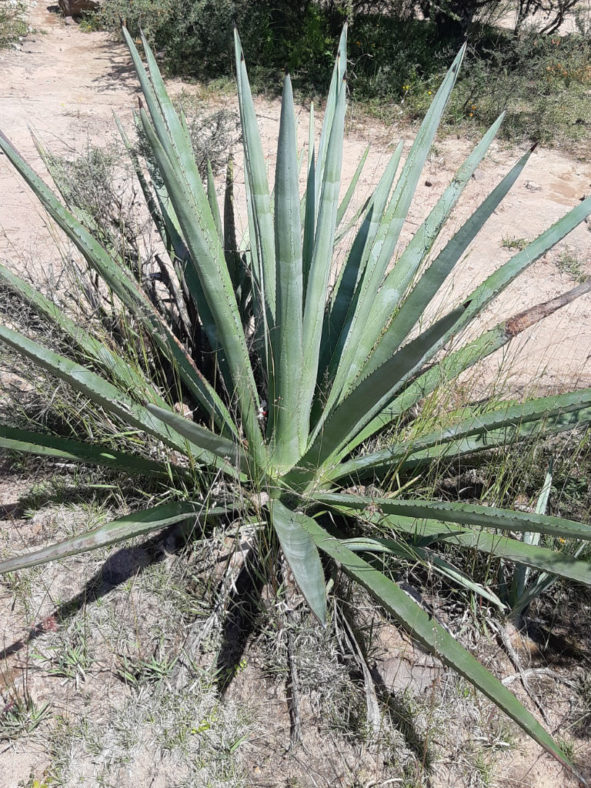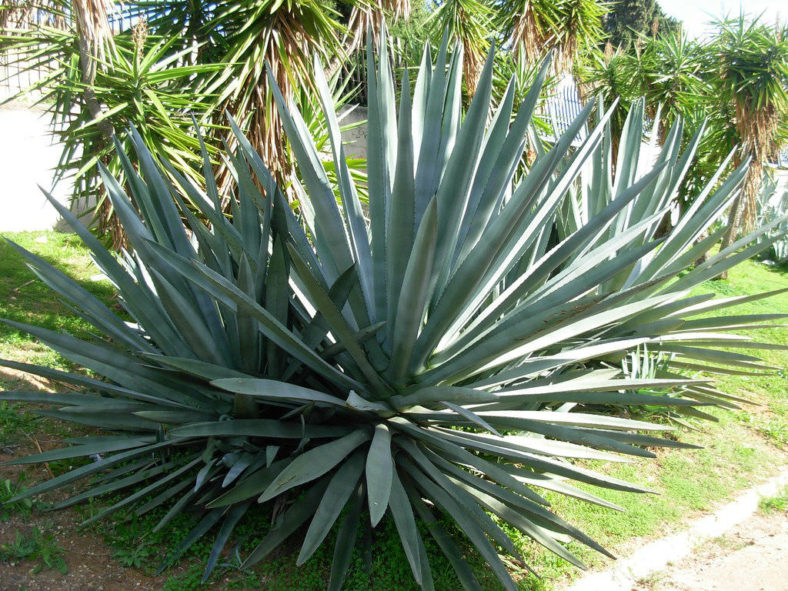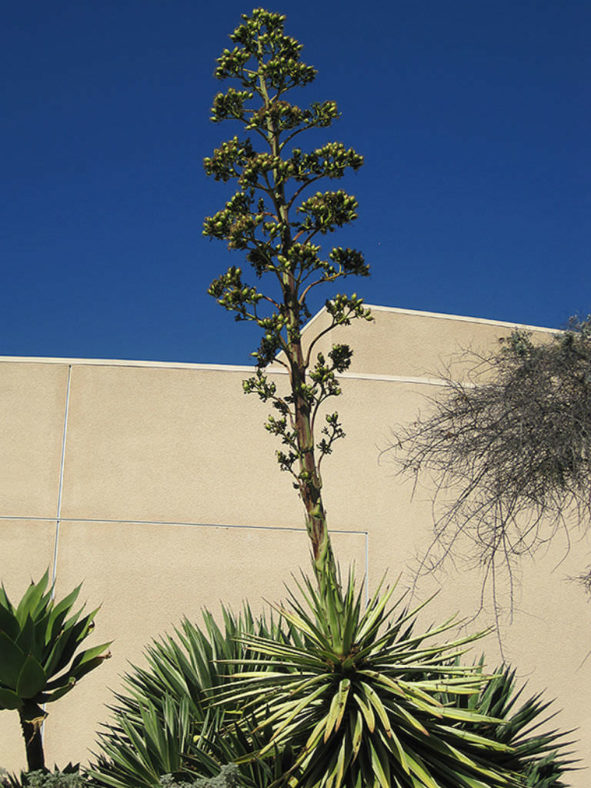Scientific Name
Agave tequilana F.A.C.Weber
Common Name(s)
Blue Agave, Tequila Agave, Weber's Blue Agave
Synonym(s)
Agave angustifolia subsp. tequilana, Agave angustifolia var. pes-mulae, Agave palmaris, Agave palmeris, Agave pedrosana, Agave pes-mulae, Agave pseudotequilana
Scientific Classification
Family: Asparagaceae
Subfamily: Agavoideae
Genus: Agave
Etymology
The specific epithet "tequilana (te-kee-lee-AH-na)" refers to Tequila, a town and municipality in the State of Jalisco in Mexico.
Origin
Agave tequilana is native to Mexico (Jalisco).
Description
Agave tequilana is a fast-growing succulent that forms large rosettes of thick, fleshy, blue-green to silver-green leaves that turn reddish in full sun. The rosettes can reach up to 6 feet (1.8 m) in height and nearly equal in diameter. The leaves are lance-shaped with light to dark brown marginal teeth and a sharp brown terminal spine. They can measure up to 4 feet (1.2 m) long and 4.8 inches (12 cm) wide.
After 5 to 8 years, the rosettes mature and produce a flower stalk that can grow up to 20 feet (6 m) tall and have 20 to 25 branches. The flowers are green with purple stamens and appear in summer. The rosette dies after flowering, leaving offsets to continue the life cycle.
Tequila is exclusively produced in five regions of Mexico (Jalisco and parts of Guanajuato, Tamaulipas, Michoacan, and Nayarit). It is made only from a specific cultivar of Agave tequilana called Agave tequilana 'Weber Azul'. This cultivar is a rapid grower and prolific offsetter with larger rosettes and blue-gray leaves.

How to Grow and Care for Agave tequilana
Light: These plants require full sun to part shade. If you are growing Agaves indoors, choose a bright, sunny window with as much sun as possible. Agave plants love going outside from spring to fall.
Soil: Agaves will tolerate most soils as long as they have good drainage, but their preference is sandy or rocky soil.
Hardiness: Agave tequilana can withstand temperatures as low as 25 to 40 °F (-3.9 to 4.4 °C), USDA hardiness zones 9b to 10b.
Watering: Mature plants are very drought tolerant. From spring to fall, water thoroughly your Agave when the soil mix becomes dry. In winter, water sparingly about once a month. Plants in containers require more frequent watering than those in the ground.
Fertilizing: Give your Agaves a small amount of fertilizer in the spring during the first two years.
Repotting: When the pot becomes full of roots, it has become pot-bound. If you notice your Agave becoming pot-bound, repot it with new soil in a new pot that is just slightly larger than the old one.
Propagation: Since it can take years to produce seeds, Agaves are usually propagated by offsets.
Learn more at How to Grow and Care for Agave.
Toxicity of Agave tequilana
Agave tequilana is not toxic to humans, but it may be mildly poisonous to children and pets.
Cultivars of Agave tequilana
Links
- Back to genus Agave
- Succupedia: Browse succulents by Scientific Name, Common Name, Genus, Family, USDA Hardiness Zone, Origin, or cacti by Genus
Photo Gallery
Click on a photo to see a larger version.


